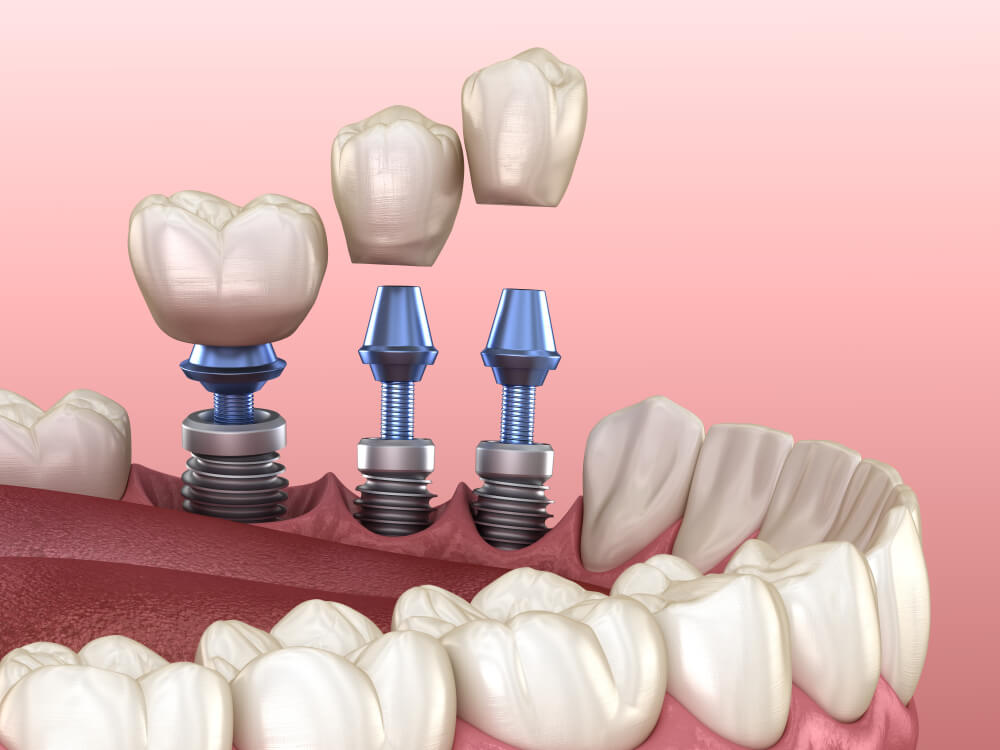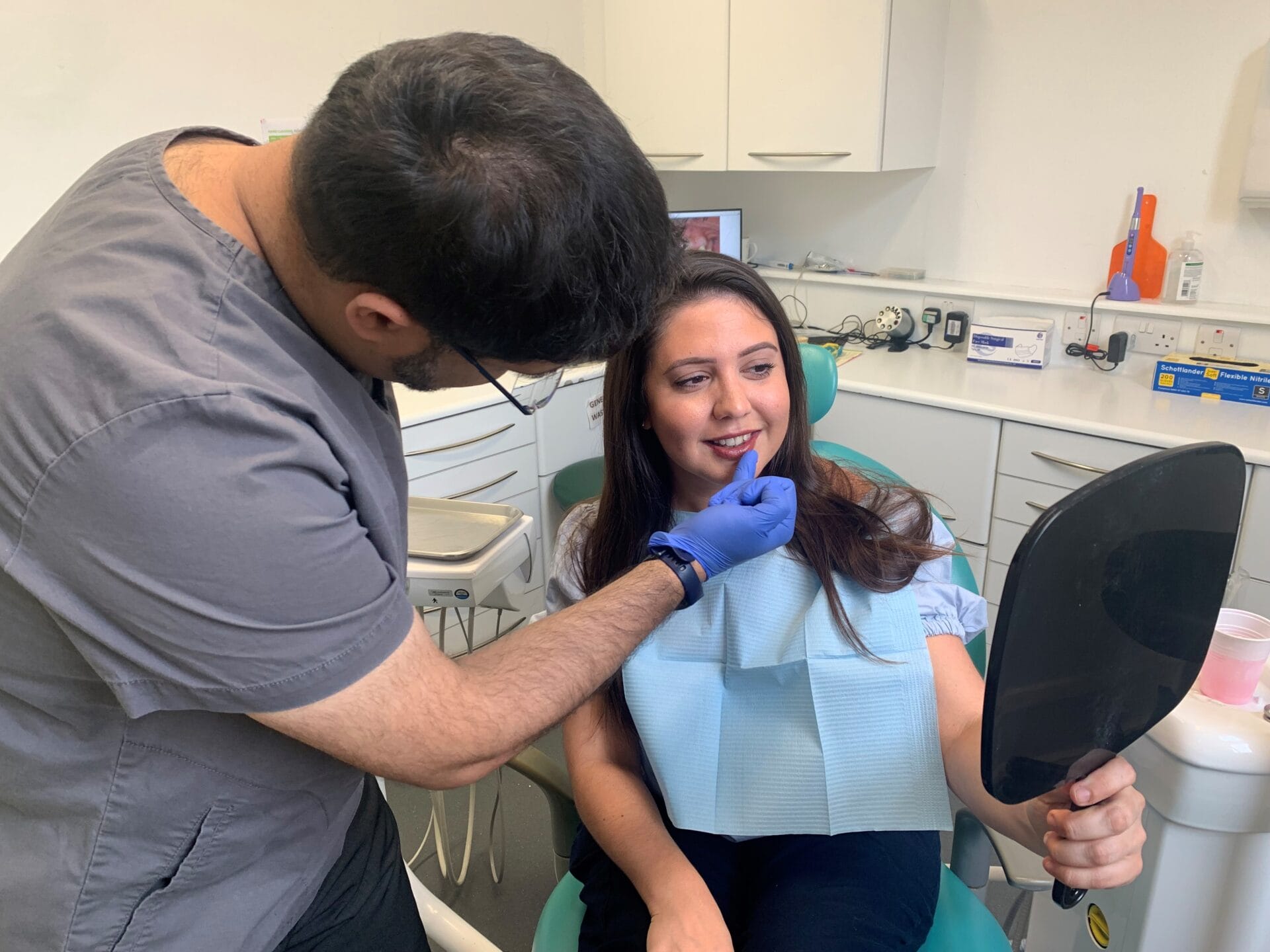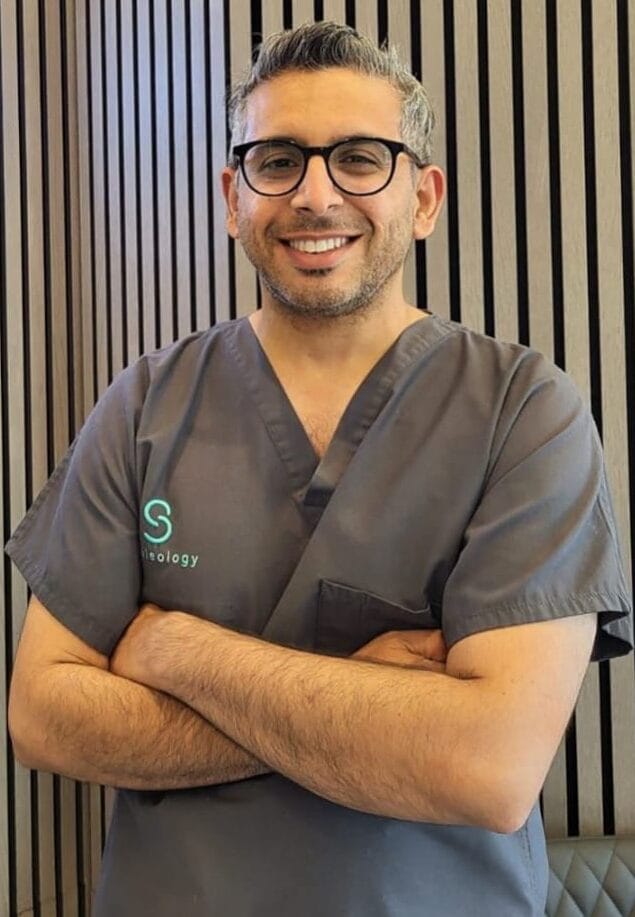Bring Back Functionality and Aesthetic Appeals: Dental Implants Kent Solutions
Bring Back Functionality and Aesthetic Appeals: Dental Implants Kent Solutions
Blog Article
Experience the most recent Technologies in Dental Implants Innovation
As the area of dentistry continues to evolve, the innovations in oral implant technology have actually been absolutely nothing short of impressive. The integration of innovation is reinventing the functionality of oral implants, guaranteeing improved results and person contentment.
Advanced Materials for Enhanced Sturdiness
In the realm of oral implants technology, the assimilation of sophisticated products has significantly contributed to boosting sturdiness and longevity of these essential dental prosthetics. The usage of products such as titanium alloys, zirconia, and ceramic compounds has actually revolutionized the field by offering raised biocompatibility, strength, and resistance to rust.
Titanium alloys are widely utilized in oral implants as a result of their extraordinary strength-to-weight proportion, deterioration resistance, and compatibility with the body. These alloys make certain the stability and durability of the implant by enduring the pressures applied throughout speaking and eating, providing a trusted remedy for patients looking for resilient tooth substitutes.
Zirconia, a type of ceramic product, has acquired appeal for its biocompatibility and all-natural tooth-like look. Its high stamina and resistance to wear make it a suitable option for dental crowns and bridges, improving the total aesthetic appeals and performance of the implant.

Digital Imaging for Specific Placement
The evolution of oral implants technology has additionally advanced with the combination of electronic imaging methods, ensuring exact positioning of these prosthetics for optimum useful and aesthetic end results. Digital imaging plays a critical role in the planning and placement of dental implants by giving in-depth 3D photos of the patient's jawbone framework. This innovation permits dental practitioners to assess bone thickness, locate vital structures, and intend the specific setting and angle for dental implant positioning with unparalleled precision.
By using electronic imaging, dental practitioners can develop virtual surgical overviews that function as a roadmap during the implant positioning treatment. These overviews are tailored for every individual, thinking about their distinct composition and the desired end result. This level of accuracy not just improves the success rate of oral implant treatments however also lowers the danger of problems.
In addition, digital imaging allows dental experts to picture the final prosthetic remediation before the actual positioning of implants, permitting meticulous preparation and making sure that the result meets the client's aesthetic assumptions. In general, the combination of digital imaging innovation has changed the area of dental implants, offering people a more predictable, effective, and patient-specific treatment strategy.

Minimally Intrusive Surgical Methods


Advancements in medical strategies have caused the advancement of minimally invasive techniques in the field of oral implantology. These techniques aim to minimize trauma to the client, shorten recovery times, and enhance general therapy end results. Minimally intrusive surgeries involve smaller sized cuts, specialized tools, and advanced imaging modern technologies to specifically put oral implants with very little disturbance to surrounding tissues.
One secret element of minimally invasive techniques is using assisted surgical procedure, where 3D imaging and computer-aided design software are used to prepare the dental implant positioning with fantastic precision. This enables a much more foreseeable result and can often eliminate the requirement for comprehensive flap surgical procedure.
Furthermore, developments in products and implant style have actually likewise contributed to the success of minimally invasive approaches. Implants with enhanced surface residential or commercial properties promote quicker osseointegration, reducing the recovery time view website called for prior to the prosthetic restoration can be put.
3D Printing for Customized Solutions
Utilizing 3D printing innovation in oral implantology permits the production of extremely tailored remedies tailored to individual client needs and physiological variations. This advanced modern technology makes it possible for dental professionals to design and make oral implants with exceptional accuracy and precision. By making use of electronic imaging strategies, such as cone light beam calculated tomography (CBCT), comprehensive 3D versions of the client's oral tooth cavity can be produced to assist go right here the dental implant intending procedure.
Among the essential benefits of 3D printing in dental implantology is the capacity to develop patient-specific implants that completely fit the special anatomy of each individual. This individualized strategy aids improve the total success and durability of the dental implant by making certain optimum fit and positioning. Additionally, 3D printing permits the production of complicated geometries and elaborate frameworks that would certainly be difficult or tough to achieve using traditional manufacturing techniques.
Additionally, 3D printing technology enables dental professionals to simplify the implantation process, decreasing surgical procedure time and boosting general patient experience. With its capability to create customized remedies promptly and successfully, 3D printing is transforming the area of dental implantology, offering people innovative therapy alternatives and enhanced outcomes.
Integrated Technology for Improved Functionality
Applying cutting-edge technology in dental implantology boosts functionality and accuracy, elevating the standard of look after patients going through implant procedures. Integrated technology plays a critical duty in enhancing the total success and sturdiness of oral implants. One key innovation is the assimilation of digital scanning and imaging technologies, such as cone-beam computed tomography (CBCT) and intraoral scanners. These tools enable thorough 3D imaging of the client's oral structures, helping with specific therapy preparation and implant positioning.
Furthermore, the assimilation of computer-aided style and computer-aided manufacturing (CAD/CAM) technology enables the creation of customized implant restorations with extraordinary accuracy. CAD/CAM systems utilize electronic impressions to create prosthetics that perfectly fit the individual's unique composition, making certain ideal comfort and performance. Additionally, the usage of robotic-assisted surgical procedure in dental implant positioning improves Bonuses accuracy and decreases the threat of human mistake.
Final Thought
In final thought, the newest technologies in oral implants modern technology deal improved sturdiness through innovative products, exact placement with digital imaging, minimally invasive medical techniques, tailored remedies with 3D printing, and boosted performance with incorporated innovation - Dental implants Kent. These developments in oral implants technology are changing the field and providing individuals with more reliable and effective therapy options for recovering their smiles and dental wellness
The assimilation of innovation is reinventing the capability of dental implants, assuring enhanced end results and individual fulfillment.
The evolution of oral implants innovation has additionally advanced with the combination of electronic imaging methods, guaranteeing specific placement of these prosthetics for optimum functional and visual end results. Minimally invasive medical treatments involve smaller lacerations, specialized instruments, and advanced imaging technologies to specifically place dental implants with marginal disruption to surrounding cells.
Executing sophisticated innovation in oral implantology boosts functionality and accuracy, boosting the standard of care for individuals undergoing implant procedures. Dental implants Kent. Integrated modern technology plays an essential function in improving the overall success and longevity of oral implants
Report this page